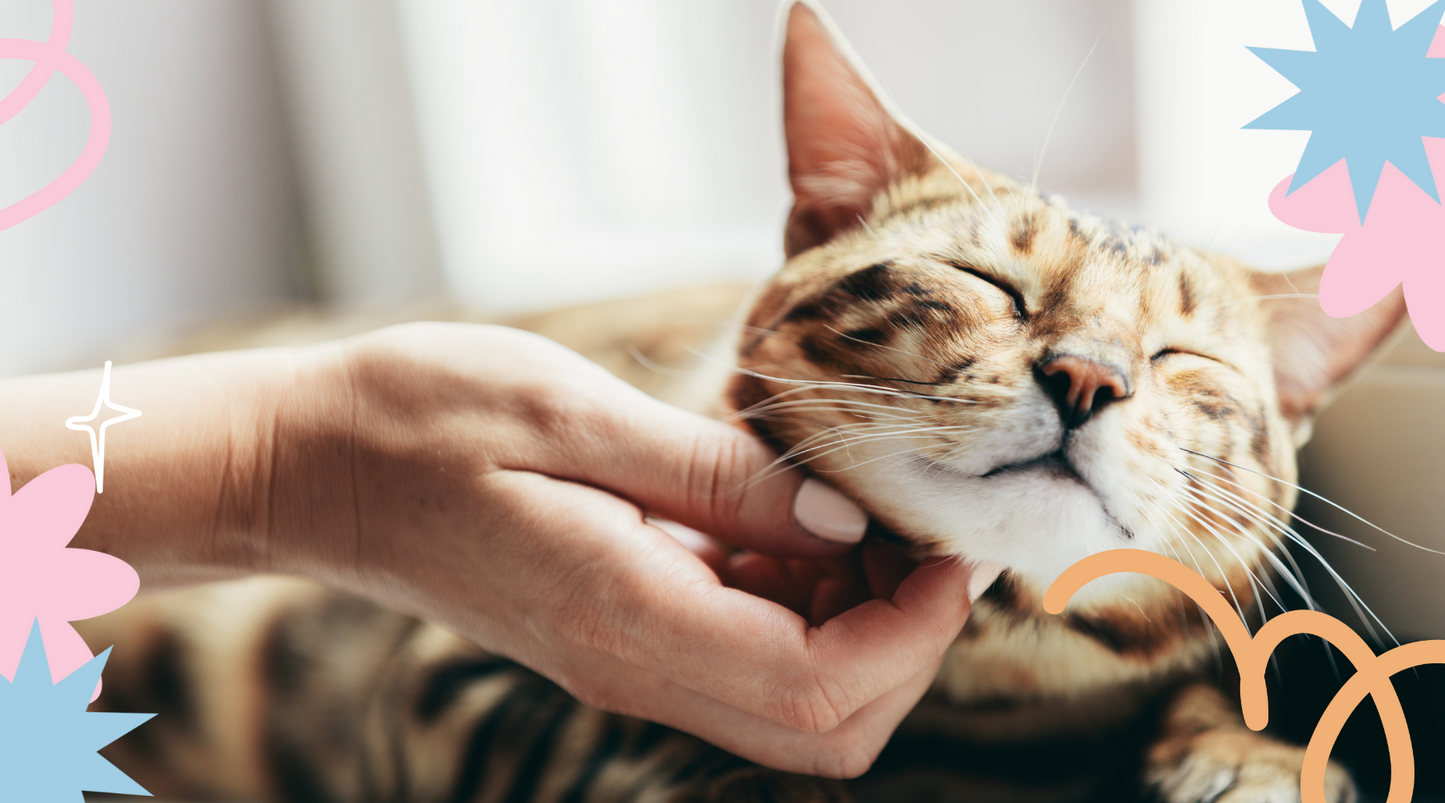
Cat breeds display a diverse array of morphological traits and personalities. However, years of selective breeding have also led to an increased prevalence of genetic diseases. Understanding the genetic structure of breeds is important for managing genetic health.
This article will cover the origins and relationships among cat breeds, examine overall genetic diversity, and highlight the frequency of genetic disease. Genetic testing is an important tool for responsible cat breeding. Ultimately, maintaining the diversity and health of our domestic cats is a global effort.
What Are Some Common Cat Breeds and Where Did They Originate?
There are over 70 recognized cat breeds according to the Cat Fanciers' Association. Popular breeds like the Persian cat, Maine Coon cat, and Siamese cat have very distinct appearances and personalities. However, the genetic history of cat breeds reveals surprising relationships.
The Persian breed is known for its long flowing coat and laid-back personality. But did you know DNA evidence suggests Persian cats originated from Western Europe, not the Middle East? The Norwegian Forest Cat is adapted to survive cold winters, but genetic analyses indicate it is closely related to Western European cats.
Let's take a closer look at some of the most popular breeds:
Persian
This breed dates back to the 1600's and is thought to have originated from long-haired cats brought to Italy by sailors. The docile, long-haired Persian became immensely popular as a house pet.
Maine Coon
One of the largest domesticated breeds, the Maine Coon likely descended from long-haired cats brought to the Americas by European settlers. Their adaptation to the cold northeastern winters gave rise to the Maine Coon's lush, water-resistant coat.
Siamese
With their distinctive color-points and vocal nature, Siamese cats originated from Thailand (formerly Siam). The breed became popular in Europe after being exhibited at a cat show in London in 1871.
Abyssinian
Resembling depictions of African wildcats, the Abyssinian breed originated from cats brought to Britain from Ethiopia (formerly Abyssinia) in the late 1860's. Their distinctive ticked coat is a natural mutation.
Ragdoll
A recently developed breed, Ragdolls were bred starting in the 1960's in California by crossing long-haired cats including Persians and Birmans. Ragdolls are known for their docile, puppy-like personality.
Sphynx
Bred starting in the 1960's, the Sphynx breed originated from hairless kitten mutations in domestic cats. Because they lack a fur coat, Sphynx cats require special temperature-controlled environments.
Scottish Fold
Originating in Scotland in the 1960's, Fold cats have a natural mutation that causes their ears to fold forward. Controversy exists around breeding folds due to skeletal abnormalities associated with the folded ear gene.
Bengal
Developed since the 1980's, Bengals resulted from crossing small wild Asian leopard cats with domestic cats. The Bengal retains a wild appearance but a domestic temperament.
How Genetically Diverse Are Modern Cat Breeds?

Researchers have analyzed the genomes of cats worldwide to elucidate the origins of modern breeds. Genotyping of over 1,100 cats representing 22 breeds revealed four main genetic clusters.
The analysis clearly delineated four genetic clusters of cats: Western and Northern Europe, Mediterranean Basin and Western Asia, Southeastern Asia, and East Asia. Next, researchers included cat breeds in Bayesian analyses to examine basal relationships among all cat breeds.
Several key findings emerged:
- Most breeds grouped with random bred cat populations according to their region of origin. This suggests most cat breeds originated recently from local cats.
- Asian breeds formed a distinct cluster separate from all other cats. Several Southeast Asian breeds like the Korat, Burmese, and Siamese showed close genetic relationships with high statistical support.
- Compared to Western breeds, Asian breeds possessed more private alleles indicating greater genetic differentiation.
- On average, cat breeds had lower genetic diversity than regional random bred cat populations. For example, the Persian breed showed 17 times lower diversity than cats from Iran.
To put this into context, let's examine a few specific breeds:
- The Persian breed formed a subgroup with Western and Northern European cats. However, Persians showed much lower genetic diversity indicating inbreeding due to selective breeding.
- Norwegian Forest Cats clustered near other Western European breeds. But they possessed higher diversity indicating less intense selection.
- Siamese cats formed part of the Southeast Asian group. But their genetic distinctiveness suggests recent selection for desired physical traits.
- Random bred cats from the Mediterranean region showed closer affinity to Western breeds than to cats from Southeast Asia.
When Did Domestication First Occur and How Did It Impact Cats?

Genetic analyses indicate the first domestication of cats occurred randomly across Western Eurasia. Domestication probably began around 10,000 years ago when humans transitioned to agriculture.
The rise of grain storage attracted rodents, which in turn attracted wild cats. As wild cats began living in close proximity to humans, populations gradually adapted to domestication. Genetic studies indicate cat domestication occurred gradually over thousands of years.
In contrast, dogs experienced selective breeding by humans much earlier during their domestication history. Human activities likely impacted the spread of cats over time. For example, European settlers probably brought cats to the New World beginning in the 17th century. The Vikings are thought to have brought cats with them as they explored and colonized new lands.
Trade ships often carried cats to control rodents during long voyages. Genetic studies show present-day cat populations in Viking settlement areas of Northern Europe, Iceland, and eastward as far as Western Russia likely originated from cats brought by Viking explorers.
Overall, most random bred cat populations possess higher genetic diversity than modern pedigreed cats. Many foundation cat breeds like the Siamese and Persian developed during the 19th century. Compared to random bred cats, modern breeds have undergone extensive inbreeding.
The beginnings of cat shows and breed registries in the late 1800's launched the development of modern cat breeds. Rising popularity of cat breeds led to selection for desired visual and behavioral traits. In the process, foundation cat breeds lost genetic variability.
Development of cat breeds has led to an overall global loss of genetic diversity. However, random bred cat populations maintain higher levels of heterozygosity and allelic diversity. Outcrossing source cats from regional random bred populations can improve the health of modern breeds.
What Genetic Tests Are Available for Responsible Breeding?

Veterinary genetics laboratories can screen for many known mutations causing genetic disease. For example, Burmese cats can be tested for gangliosidosis, a fatal neurodegenerative disorder. Persian cats should be screened for polycystic kidney disease which affects kidney function. Responsible Maine Coon cat breeders test for Hypertrophic cardiomyopathy (HCM) which can cause sudden heart failure.
Genetic testing enables breeders to avoid matings that would produce affected kittens. Testing is critical for breeds with a high frequency of disease-associated mutations. Outcrossing to unrelated cats free of the mutation can re-establish genetic health in affected lines.
The UC Davis Veterinary Genetics Laboratory offers over 40 genetic tests including:
- Coat color and trait tests like dilute colors, longhair, and wirehair
- Blood type testing which is important before cat transfusion
- Progressive disorders like gangliosidosis, cardiomyopathy, and polycystic kidney disease
- Early-onset disorders like spinal muscular atrophy and lysosomal storage diseases
Genetic testing empowers breeders to make informed mating choices and gradually reduce the incidence of inherited disease. Testing combined with outcrossing can restore health to breeds that have experienced significant inbreeding.
How Can Breeding Programs Maintain Genetic Health?

Cat breeders have established outcrossing programs to expand genetic diversity and reduce the prevalence of inherited disorders. For example, the Norwegian Forest Cat program allows occasional outcrossing to random bred cats meeting breed standards.
Breeds with very low genetic diversity like the Siamese require organized outcrossing efforts. Outcross projects have also begun for the Persian breed which has high rates of disease due to extreme inbreeding. The Persian outcross project breeds purebred Persians with foundation stock random bred cats from their region of origin such as Turkey.
Many breed organizations cooperate through the International Cat Association (TICA) to manage the health and sustainability of their breeds. TICA's Genetics Committee oversees several initiatives:
- Registration status for foundation cats enrolled in outcross programs
- Guidelines for allowable outcrosses in breeds needing gene pool expansion
- Protocols for introducing foundation stock and monitoring offspring
- Recommendations for health testing and monitoring genetic diversity
- Education programs on genetic health testing for breeders
Cat breeders increasingly recognize the need to balance selection for desired traits with the maintenance of genetic health. Responsible breeding aims to sustain breeds for the long term by avoiding extreme morphologies and inbreeding depression.
Summary of Key Points
- Most cat breeds originated recently from random bred cats of their native region, except for Southeast Asian breeds which form a distinct genetic cluster.
- On average cat breeds have lower genetic diversity compared to random bred cats. Selective breeding has decreased diversity within many breeds.
- Over 90 hereditary disorders have been documented in cats. Breeds like the Persian and Burmese have high rates of genetic disease.
- Genetic testing enables responsible breeders to manage disease-associated mutations and improve breed health.
- Global efforts to increase outcrossing and genetic diversity are important for the future of cat breeds. Balancing selection and health maintains sustainable breeds for the long term.
In summary, understanding the genetic structure of cat breeds provides insights into their origins and relationships. While selective breeding has produced unique breeds, it has also propagated inherited disorders. Genetic testing coupled with outcrossing programs can restore lost gene pool diversity. Maintaining breed health through genetic evaluations and careful selection will sustain cats for the enjoyment of generations to come.
